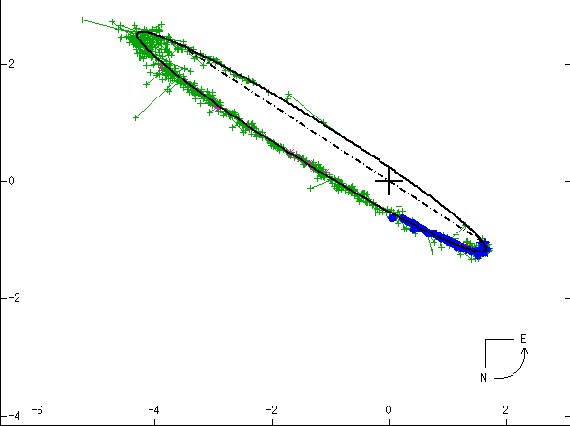
 |
The components of 44 Bootis, 44 Boo A and B, go around each other every 209.8 years averaging 46 Astronomical Units apart, a fairly high orbital eccentricity taking them between 22 and 69 AU away from each other. Though each orbits a common center of mass that lies between them, they are presented here as if 44 B, which is itself an eclipsing contact binary (making the system triple), goes about 44 A, which lies at the cross. Note the small angular separation, as seen on the axes. The orbital semi-major axis (dot-dash line) and focus (the cross) are offset from the apparent orbital ellipse because of the orbital tilt and orientation against the plane of the sky. (W. I. Hartkopf and B. D. Mason, Sixth Catalog of Orbits of Visual Binary Stars, US Naval Observatory Double Star Catalog, 2006.) |